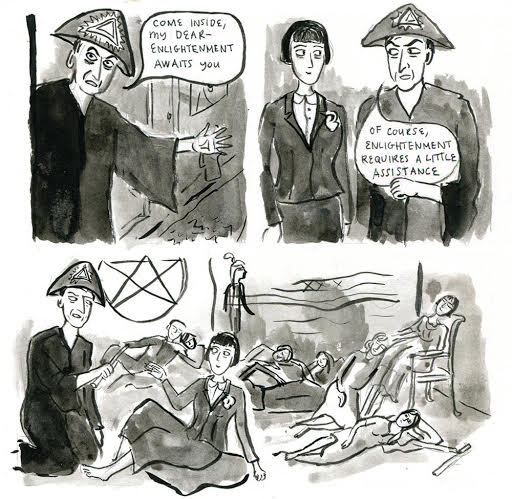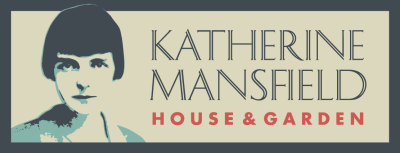WHEN KATHERINE MANSFIELD MET ALEISTER CROWLEY
- 13 September 2017
- Sofia Roberts
Where to start when describing Aleister Crowley?
Born 12 October 1875, he is best known as one of the most famous occultists in the world. He created a new religious philosophy called Thelema, and collaborated with artist Lady Frieda Harris to create the Thoth tarot deck. He was also a mountaineer, writer, and painter - some of his paintings are currently being shown in New Zealand for the first time ever at City Gallery’s Occulture exhibition. He was controversial then (an open drug user and 'sex magik' practitioner) and continues to be controversial today (with his questionable beliefs on women and people of colour). Like Katherine he was bisexual, and spent his life living outside of polite society’s expectations and battling ongoing health concerns.
A chain of acquaintance brought Katherine Mansfield and Aleister Crowley together. Katherine’s husband John Middleton Murry had previously published a review of Thelema in his literary journal Rhythm. Katherine had also reviewed a book by Crowley’s occasional lover Victor Neuburg for Rhythm. She critiqued this harshly - rubbishing the mysticism, saying it was: "perverted sensuality; it is 'passionate admiration' for that which has no reality at all. It leads to the annihilation of any true artistic effort." Despite this, Katherine was clearly curious about Crowley - as she enquired after him and Neuburg to Middleton.

Image: Aleister Crowley and Katherine Mansfield from Mansfield and Me by Sarah Laing (published by VUP, 2016).
Katherine would finally come into contact with Crowley a year later at a party hosted by a mutual friend, Gwen Otter. Katherine’s lifelong friend Ida Baker, recorded in her diary that KM "was caught up in briefly in an odd group of people [...] with an interest in the occult. The leader of this group was Aleister Crowley. Katherine was invited to an Evening during which [...] Hashish was taken."
Records of what happened that night differ. In her book Katherine Mansfield: Story-Teller, Kathleen Jones describes the night thus: "She smokes cannabis for the first time hoping for some kind of psychic revelation. Instead she gains insight into her own character. While others are in lotus-land she sits on the floor arranging matches into mathematical patterns." V&A curator James Laver, who was also there that night, said that KM "babbled a bit, remarked that she could do up the buttons on her nightgown 'if we talk to them very gently,' and munched some biscuits, repeating at intervals her refrain, 'Pity that stuff had no effect." The relationship between Katherine Mansfield and his friend group dissolved shortly after. Katherine went on to describe Aleister Crowley as "a pretentious and very dirty fellow."
Katherine’s harsh criticism of mysticism is perhaps ironic given the importance it would later play in her life. She would live the last months of her life in Georges Gurdjieff's Institute for the Harmonious Development of Man in Fontainebleau, France - living by principles she may once have scoffed at. Despite their differences, Crowley and Katherine continue to inspire and intrigue modern audiences. With their eclectic and enigmatic personalities, and complicated lives, people will pore over their work for generations to come.
Bibliography
Crowley, Aleister (1929). The Spirit of Solitude: an autohagiography: subsequently re-Antichristened The Confessions of Aleister Crowley. London: Mandrake Press. Chap. 62-63
Kaczynski, R. (2002). Perdurabo: The Life of Aleister Crowley. Berkeley: North Atlantic Books.
Kimber, G., Reid, S. and Wilson, J. (2011). Katherine Mansfield and literary modernism. Continuum International Publishing Group.
Mansfield, Katherine (1912) 'The Triumph of Pan' [review], Rhythm
